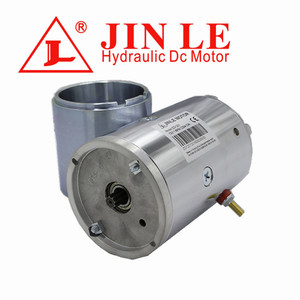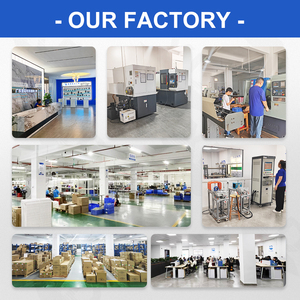
All categories
Featured selections
Trade Assurance
Buyer Central
Help Center
Get the app
Become a supplier

(3500 products available)






























A 25kw dc motor is equipped with a brushed design. This variant features brushes that provide electro-mechanical energy processes. The energy transition through the brush allows this motor to function at high power and torque. These two attributes mean that brushed DC motors serve well in those industries that demand high performance. For example, they provide good service in CNC machines, hoists, and lathes.
In a permanent magnet DC motor, the magnetic field is offset through permanent magnets. The connection of the armature winding to the DC power supply is offset through a commutator. The addition of permanent magnets into the design makes these DC motors less complex. Less complexity causes a reduction in the maintenance level. Hence, one can find these motors in equipment with low power but high importance. Common PMDC applications include conveyor belts, electric brakes, and automotive windows.
Apart from the standard field winding of the stator, the uniquely excited DC motor is exciting from an external power source. So, the attribute that makes it different is that the generator field is derived from a separate power source. This quality gives this motor good speed-control range versatility. The speed can be increased or decreased according to the operating condition needs. Hence, a separately excited 25kw dc motor is often used in steel mills, cement industries, and lift applications. Basically, they are used in high-importance industrial applications requiring good speed range and consistent torque.
In a series DC motor, the field windings are connected to the armature. This means that the current going to the windings is the same as to the armature. The winding connection results in the motor developing high torque at low speed. This attribute makes this motor good at driving large loads with high inertia. One can commonly find series DC motors in electric traction, cranes, and miners.
A 25kw brushed dc motor is one of the major components of electric vehicles (EVs). It helps drive the wheels and gives the needed power for acceleration. This motor can be used for both light- and heavy-duty vehicles. Common light-duty vehicles that use this motor are buses. Heavy-duty vehicles include mining, material handling, and transportation vehicles. The motor has high efficiency and gives good torque and speed control. These electric cars require less maintenance than internal combustion engine vehicles. This helps to lower the overall operating costs.
In industries, one can find the 25 kW DC motor in many machines. These machines are conveyor belts, pumps, and compressors. In industrial machinery, this motor offers good torque and speed control to accomplish the job. In simple terms, it improves productivity and efficiency and drives large loads with good power. Also, being electric, these motors reduce noise and emissions. Thus making the working environment better for the employees.
The 25kW DC motor parts can also be used to power actuators in various aerospace systems. These systems include flight control surfaces, landing gear, and auxiliary power units (APUs). In these high-tech fields, electrical power is needed, as is a high power-to-weight ratio. The DC motor provides both these values without the complications associated with internal combustion engines. Additionally, electric motors produce less vibration. Since the motor will drive critical functions in aircraft, the motor will also need a good vibration tolerance and reliability feature like the 25kw DC motor.
Renewable energy systems, especially in the off-grid and backup power setups, use 25kW dc motors as generators. These motors are connected to turbines or other energy-harnessing devices to produce electricity. In simple terms, they capture wind or water energy and convert it into electrical power. Most systems here produce power using the available natural resources. Furthermore, they can work in different conditions and provide reliable and clean energy, significantly reducing carbon emissions and dependency on fossil fuels.
The robotics industry also applies the 25kW DC motor. It provides high energy and can be used in robotic arms, autonomous vehicles, and industrial robots. This motor can move heavy robotic arms with great precision and provide all robot mobility. The motor's speed and torque control can position the machine end effectors. Another advantage of autonomous vehicles using this motor is the reduction in noise.
The choice of motor type depends on several factors, including the application requirements, load characteristics, and control needs. For example, a brushed motor can provide high torque at low speed, making it suitable for certain industrial applications. In contrast, a permanent magnet DC motor would be better for electric vehicles due to its compact size and high efficiency. Therefore, it is pivotal to analyze the load requirement, environment, and operating conditions before choosing.
The motor converts electrical energy into mechanical energy, providing the power needed to propel the vehicle. The motor works with the battery and other power electronics to smoothly deliver power. Hence, it enables the vehicle to accelerate, climb, and maintain speeds depending on driver input.
DC motors use direct current (DC), while AC motors use alternating current (AC). Another difference is DC motors provide more precise speed and torque control. Conversely, AC motors are more suitable for high-power, high-speed applications. Remembering this key difference helps people know which motor to use depending on their application's needs.
Yes, a 25kW DC motor can withstand high temperatures. The key is ensuring it has proper cooling or ventilation. There are also different enclosures for these motors to protect them from external heat and dust.
Yes, this motor can be used for speeds up to 3000RPM. This speed makes it suitable for various mechanical loads without losing torque.